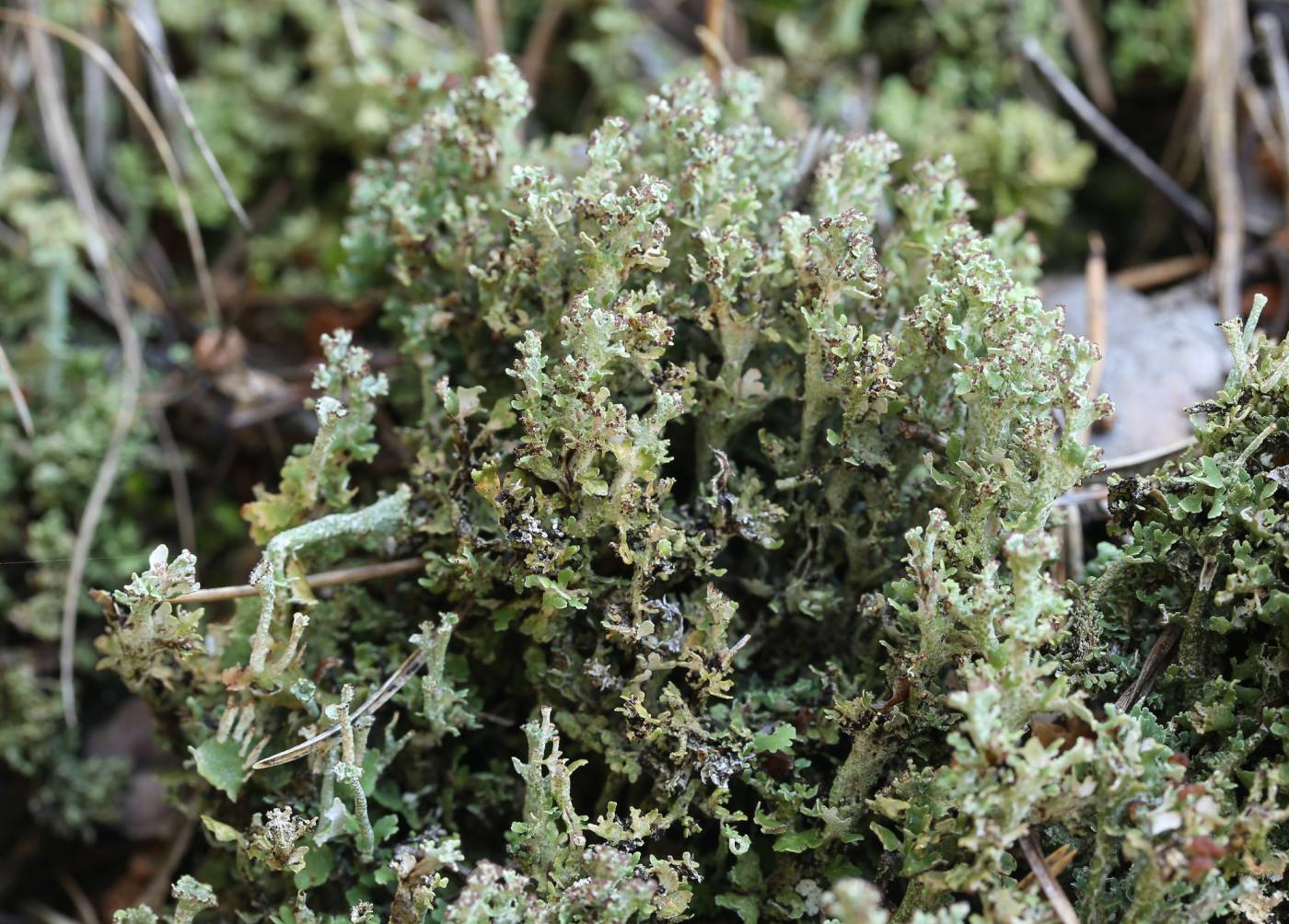A variable species characterized by a black necrotic base of older podetia, specifically exposed blackening medulla. The podetium surface is corticate, often cracked, forming cortical plates with tomentose white margins. Podetial squamules are abundant to sporadic. Podetia are usually irregularly and narrowly scyphose, proliferating at the margins, creating stacked podetia. It might be confused with scyphose forms of C. gracilis sometimes considered subsp. turbinata. However, they do not form the maculate podetial surface and have a glossy cortex, which is more or less continuous up to the apices and does not form the plates with tomentose margins.
Cladonia phyllophora grows on acidic mineral soil, sand, humus and mossy rocks from lowlands to mountains. In Europe, it is quite widely distributed, rare in the Mediterranean. In the Czech Republic, the species is locally abundant, otherwise scattered. Most of the records are from the western part. It mainly occurs in natural habitats, most commonly screes, rock outcrops, sandbanks, open pine forests and acidophilic oak forests. It may also occur in anthropogenic stands, such as sandstone pits, heap piles, and forest road margins.
Literature: Ahti T. & Stenroos S. (2013): Cladoniaceae. – In: Ahti T., Stenroos S. & Moberg R. [eds], Nordic Lichen Flora 5: 87–89.
taxonomic classification:Ascomycota → Lecanoromycetes → Lecanorales → Cladoniaceae → Cladonia
most frequented synonyms:Cladonia degeneransRed List (Liška & Palice 2010):NT – near threatened
Occurrence in the Czech Republic
All records: 303, confirmed 194. One click on a selected square displays particular record(s), including their source(s).

